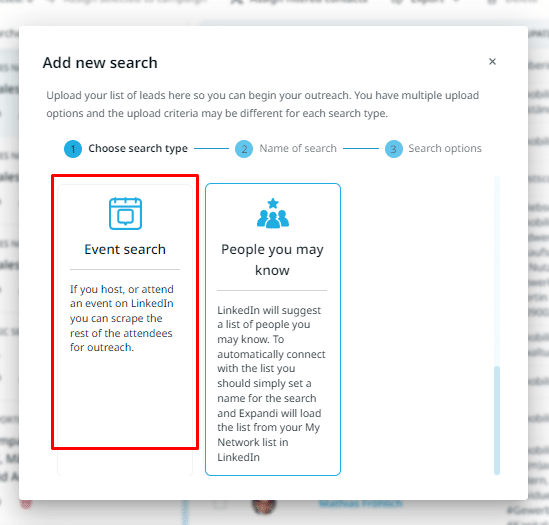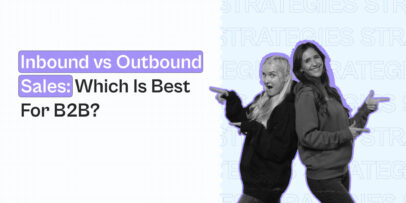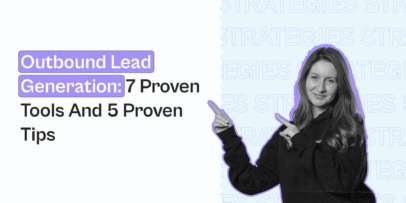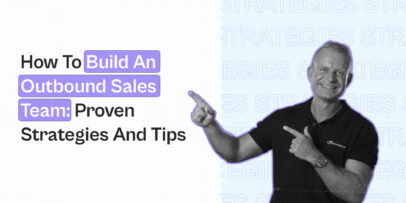The Ultimate Guide to Multi-Channel Marketing – Expandi

One of the best ways to reach your target audience and make sure you get noticed in 2024 is through multi-channel marketing.
Especially in the B2B world.
Email marketing is NOT dead, though many people believe that’s the case.
It’s just that convincing and capturing your target audience’s attention is harder.
If you’re targeting your leads on multiple marketing channels, you’re more likely to convince them this way.
Why’s that?
It’s because your target audience is getting more and more emails daily, primarily if they work in B2B marketing.
It’s not that many “classic” marketing techniques are outdated. It’s just that it’s harder to capture attention nowadays.
Here’s the solution:
You target your leads on email AND LinkedIn.
Imagine you send your lead a LinkedIn connection request. It goes unnoticed and a few days later, you send an email follow-up, which prompts them to accept the request. Then, you stop sending emails and continue with your LinkedIn social selling sequence.
Or, you send a cold email and then a LinkedIn message a few days later to confirm they got it.
Now imagine all this was done on autopilot.
That’s right. You can automate all of your multi-channel marketing and lead generation. And by the end of this multi-channel marketing masterclass, you’ll know how to do the above from 0.
Here’s what we’ll cover:
- Multi-Channel Marketing Overview: 4 Main Focus Areas For Lead Generation
- LinkedIn In Multi-Channel Marketing 2024 Overview
- Email Outreach In Multi-Channel Marketing 2024 Overview
- Top Multi-Channel Marketing Outreach Strategies and Campaigns to Swipe For LinkedIn And Email
Now, here’s what you need to know about multi-channel marketing.
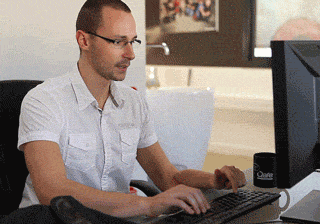
Multi-Channel Marketing Overview: 4 Main Focus Areas For Lead Generation
According to HubSpot, around eight touchpoints are needed to generate a conversion.
And the more channels you’re interacting with your leads on, the more likely you are to convince them.
In the B2B world, you’ll find most professionals and business owners prefer LinkedIn and email.
We’ve also had some success with LinkedIn Facebook ads custom audience retargeting with a lead magnet.
To briefly summarize this, the four main focus areas of multi-channel outreach marketing are as follows:
- Target audience – This type of outreach is very client-focused. It is vital to know where your audience is and how to find them based on your Ideal Customer Profile (ICP).
- Content – What kind of content would fit with your audience best? Take into consideration at which stage of the marketing funnel your target leads are and how product-aware they are of what you do.
- Personalization – Personalization is essential. If you want to stand out, you’ll want to go beyond simple first name and last name personalization. But we’ll cover all the kinds of personalization you can use in multi-channel marketing below so that you don’t spend hours looking for specific info to mention for each lead in your outreach.
- Medium – Every marketing channel is different. Ideally, you should already know which channels your audience is at and how to reach them (with what scraping, outreach, and automation tools).
Now, with this in mind, let’s break down what the two main B2B outreach channels look like in multi-channel marketing in 2024.
LinkedIn In Multi-Channel Marketing 2024 Overview
You don’t need us to tell you how important LinkedIn is for lead generation building your sales pipeline in B2B marketing.
You can filter for just about any type of target audience there, mainly if you use LinkedIn Sales Navigator.
So, let’s just jump straight into the action to get you prepared for LinkedIn outreach in 2024.
The steps we’ll cover below are as follows:
- Optimizing your LinkedIn profile for sales outreach
- LinkedIn profile warmup
- Finding your target audience on LinkedIn
- Personalization (first-line and dynamic GIFs)
- Full funnel marketing automation
1. Optimizing your LinkedIn profile for sales outreach
The first thing you’ll want to do before outreach is to improve your LinkedIn profile. It’s like your personal landing page, so you mustn’t skip this step.
Here’s a brief overview:
- LinkedIn URL – Should be your full name separated by dashes.
- LinkedIn background photo – If you want to stand out, we recommend using a custom, unique banner of 800×200 px size. In it, try to communicate your USP or solution, what makes you, why prospects should connect with you, testimonials or brands worked with, and so on.
- LinkedIn profile photo – Close-up, high-quality headshot of you to show you’re a real, friendly, and warm person.
- LinkedIn tagline – The formula for writing the perfect profile headline goes something like this: “Title + Company + benefit of working with you | keywords related to your role”.
- Work experience – Include your main accomplishments, results, and any kind of relevant data.
- Education – Focus on transferable experience or skills here.
- Skills and endorsements – People who write down at least five skills are more likely to receive 17x profile views. This is great for social proof and profile SEO, don’t skip it!
Check out our complete guide to improving your LinkedIn profile for a more detailed overview of each section.
2. LinkedIn profile warmup
Once you’ve optimized your profile, you can start preparing for outreach. Following the best LinkedIn outreach safety practices, we strongly recommend warming up your profile to avoid getting suspended.
Essentially, this helps with the number of people you can connect to daily and weekly.
Suppose LinkedIn detects suspicious behavior like you suddenly connecting with 100+ people on a brand new account or no history of engaging people. In that case, they’re going to think your account is automated or a bot and suspend it.
So, to prevent that here’s how to warm up your LinkedIn profile with Expandi:
- Go to your Profile Settings after logging in.
- Scroll down to Account warming.
- Activate the radio button on the right side.
- Choose the start limit, end limit, increase by and step length (in days) like so.
- Start slow and then increase the daily limits once you see you’re getting 50%+ average connection request acceptance rates.
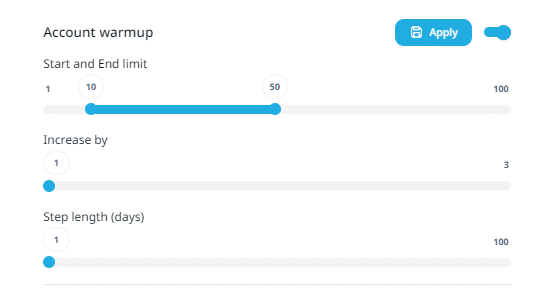
To ensure your automated outreach mimics human behavior, we recommend the following warmup settings:
- 1-5 days – 10 connection requests per day.
- 5-10 days – 20 connection requests per day.
- 15-20 days – 30 connection requests per day.
- 20-25 days – 50 connection requests per day.
Check out our up-to-date guide to the new LinkedIn limits for more info on this.
3. Finding your target audience on LinkedIn
You should also know where they hang out and how to reach them at this stage.
For example:
- What Facebook groups do they hang out in and how to scrape those groups.
- What type of LinkedIn posts they interact with, what influencers they follow, and how to scrape LinkedIn posts for outreach.
- How to scrape LinkedIn events for laser-specific outreach.
- How to scrape LinkedIn groups.
- And more.
Check out our complete guide to LinkedIn social selling strategies for more outreach strategies.
4. Personalization (first-line and dynamic GIFs)
There are a few ways to go about this.
Before, people would spend hours writing personalized first lines for each prospect or outsource it entirely.
However, now you can automate this part altogether using tools like Lyne, which writes custom intro lines based on prospect profile information that you upload in a sheet. Then, you can plug this info into your LinkedIn or email tool.
We’ve tested this in our LinkedIn InMail outreach guide. Check that out for more info and detailed step-by-step.

Alternatively, we’ve had a ton of success with another form of personalization using hyper-personalized, dynamic GIFs and images with the Hyperise integration.
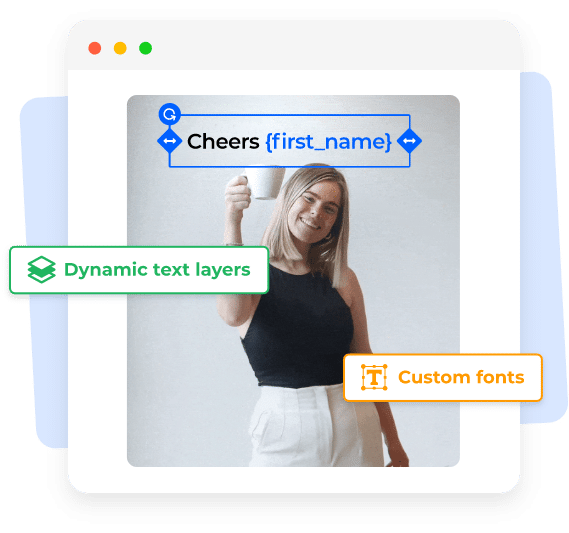
With this personalization, we’ve managed to hit a reply rate of 55% and a click-through rate as high as 85%.
To see how this works in detail, see our complete hyper-personalized LinkedIn outreach guide.
5. Full funnel marketing automation
Finally, once all the steps are in place, you can set up your multi-channel outreach funnel.
This is how you’ll be targeting your target audience, with all the latest up-to-date strategies and sequences.
To simplify how this works, you can set up simple drag-and-drop LinkedIn outreach campaigns based on if-this-then-that flows and LinkedIn sequences.
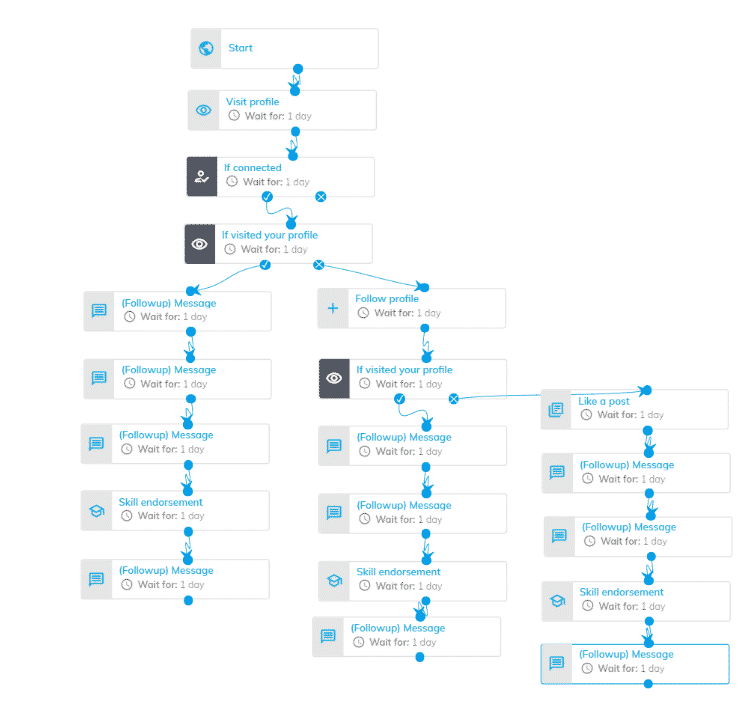
These multi-channel flows are based on Actions and Conditions.
Actions include:
- Visit profile.
- Follow profile.
- Follow company.
- Skill endorsement.
- Connection request.
- Followup message.
- Open InMail.
- Email.
- Like a post.
And Conditions include:
- Custom condition – For example, To continue when a person is not connected, check “If connected” and toggle the “If not” slide. If nothing is checked, it will skip this specific condition and will not be taken into account. It is recommended to have at minimal one setting per endpoint; otherwise, it will automatically pass.
- If connected.
- If followed you.
- If visited your profile.
- If email opened.
- Email bounced.
- Email clicked.
- Email exists.
- If Open InMail.
- If post liked.
For example, you send a LinkedIn connection request, find out it wasn’t accepted a few days later, so you set up a condition flow to send an automated email.
Not sure what kind of multi-channel flows you can set up with this automation?
Check out our full marketing funnel automation guide for examples and more info.
Now, that’s a wrap for the LinkedIn section!
Suppose you need even more info on getting the most out of LinkedIn in 2024. In that case, we’d recommend our new, free LinkedIn Academy to learn how to become a LinkedIn expert using Expandi V2.
The free course covers:
- Setting up your LinkedIn profile.
- Starting with running LinkedIn campaigns.
- Advance builder campaigns.
- How to find the right target group, no matter the niche or industry.
- How to manage all of your prospects and track lead generation data.
- Webhooks and Zaipier integrations.
- Additional features, agency options, and more.
Now, let’s get back on track and continue getting the most out of email marketing in multi-channel marketing.
Email Outreach In Multi-Channel Marketing 2024 Overview
So, what role does email play in multi-channel marketing?
Well, for the most part, it doesn’t change too much. A lot of the proven email marketing and outreach best practices you might already be aware of.
So, you might already know some of the steps we’ll cover below. So, we’ll do it briefly.
What’s worth noting here is that when you’re looking at email marketing within the scope of multi-channel marketing, you need to take into consideration:
- Email warmup and multi-channel integration
- Templates and how to start your email
- Email hyper-personalization and dynamic GIFs
Let’s take a look.
1. Email warmup and multi-channel integration
Email warmup is similar to the LinkedIn profile warmup we covered above.
It makes sense that you’d need to warm up the two channels separately when it comes to multi-channel marketing, right?
So, to prep your email inbox for this, you’ll need to authenticate:
- DKIM.
- Email SPF.
- DMARC.
And then, use an email warmup tool to mimic human behavior from your email inbox (sending emails, receiving and opening email threads, etc.).
We covered all this and more in our email warmup guide, so be sure to check that out if you want to prepare your email inbox for outreach.
Is your email domain already warmed up and you’re ready for multi-channel outreach?
Then, you’ll just want to integrate your email with Expandi.
- To get started, click on Profile settings
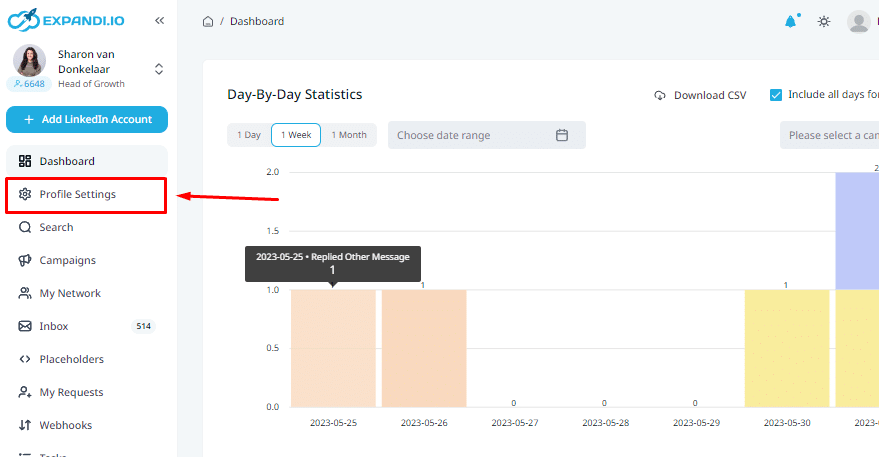
2. Click on email integration.
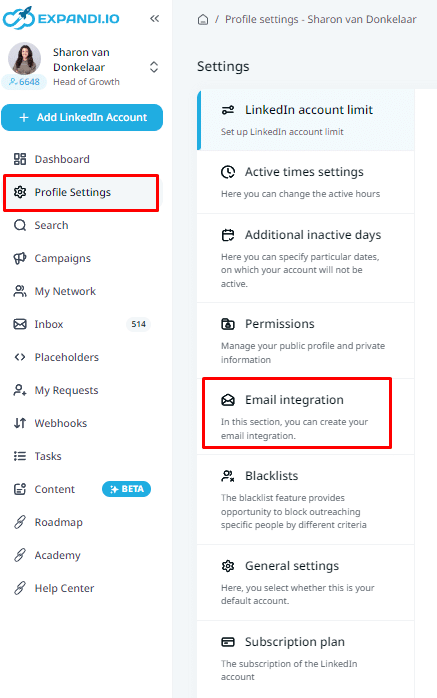
3. Choose connection type.

Then, if you use GSuite, the data should already be filled in for you. if that’s not the case, the settings should be:
- SMTP username: Your Gmail address.
- SMTP password: Your Gmail password.
- SMTP server address: smtp.gmail.com.
- Gmail SMTP port (TLS): 587.
- SMTP port (SSL): 465.
- SMTP TLS/SSL required: yes.
- Enable IMAP (Go to settings of the Gmail profile, see all settings, Forwarding and POP/IMAP, Enabled).
Make sure you have less secure app access on too.
2. Templates and how to start your email.
When writing your email templates here, you should consider what’s the context.
Has the prospect already received your connection request? Or are you pitching in the email first and then following up on LinkedIn?
So, this is entirely contextual.
If you are pitching in your email first though, you’ll want to stand out in your prospect’s inbox. To do that, you can include:
- First-line intro personalization.
- Comedy and humor to capture attention.
- Relevant pain points across your industry.
- Some kind of news or breakthrough in your industry or lead’s new achievement.
- Hyper-personalized images or GIFs (we covered this above for LinkedIn, but you can do it in email too).
Check out our guide to how to start an email to get results and replies for live examples and more best practices.
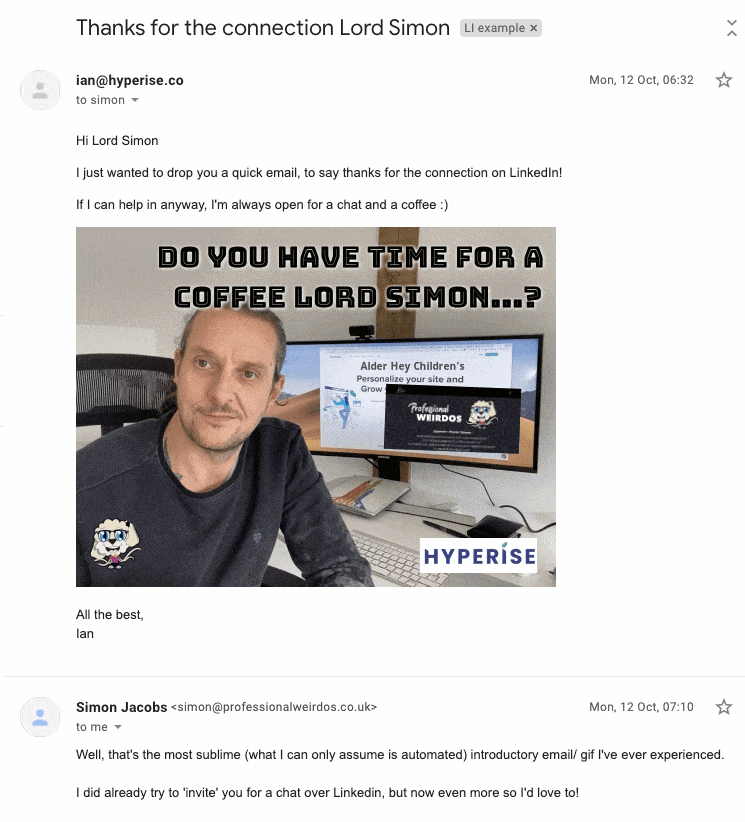
Finally, let’s look at how to craft email like the one above.
3. Email hyper-personalization and dynamic GIFs
Essentially, this is done through Hyperise and Expandi integration.
Here’s how to do that:
- Sign up for both platforms (free 7-14 day trial to get started).
- Go to Hyperise API settings, create an API token, and copy the ID.
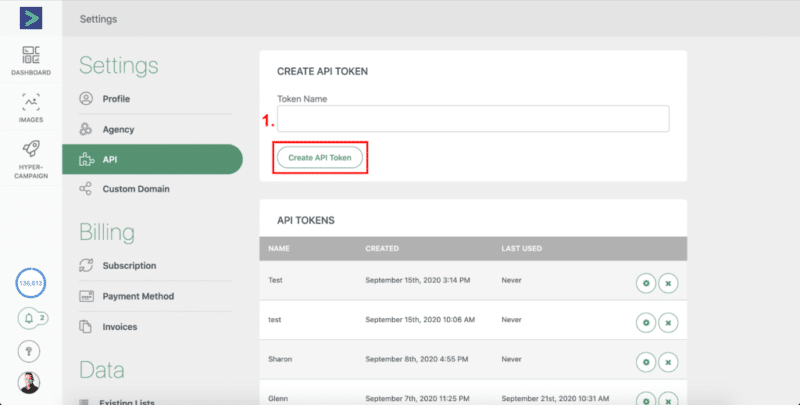
3. Go to Expandi, Profile Settings, and Paste in the API.
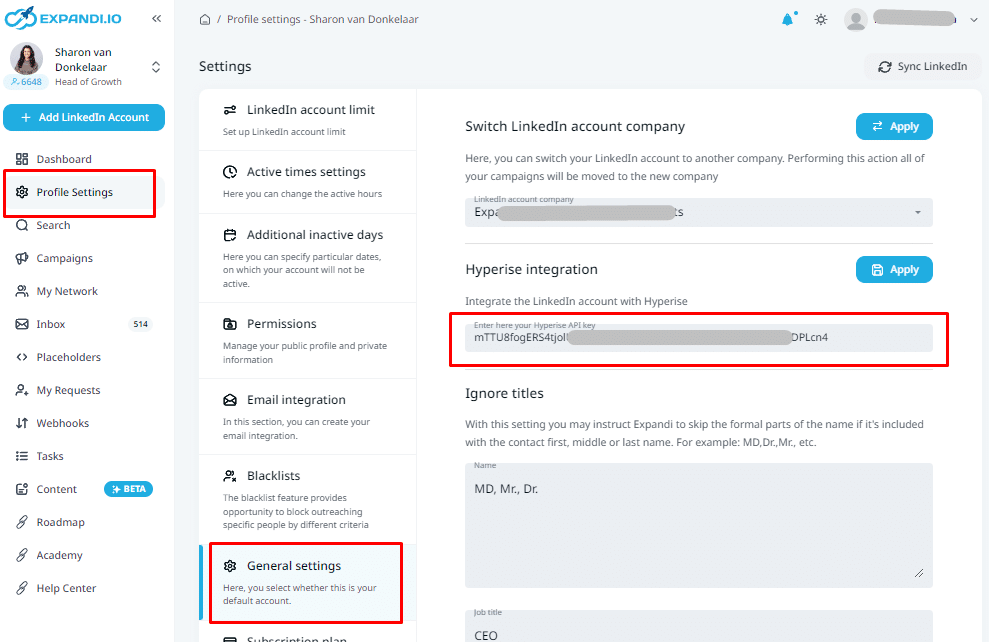
4. Then, you can select the specific campaign and press Sync from Hyperise for the desired steps message.

Then, to use this feature in a campaign you need to:
- Go to the Campaigns menu.
- Select the desired campaign.
- Choose the Steps tab.
- Set up (time delay) and body text.
- Click Sync from Hyperise button.
- From the drop-down, select the image you would like to use.
- Click on the Apply button to save the changes.
If the CTA of your email is to book a call, we strongly recommend humanizing it and adding a personal GIF.
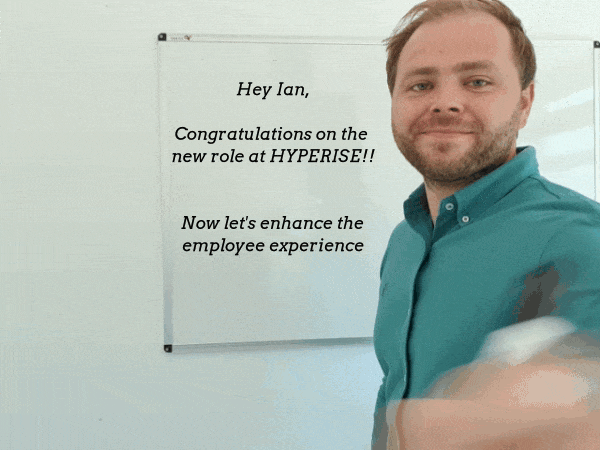
But if you’re camera-shy, you can also use GIFs for Product animations, memes, seasonal GIFs, celebrations, referrals and engagement, and more.
You can find our webinar on the topic here: The Power Of GIF Animations And Hyper-Personalization In Your LinkedIn Messaging: Skyrocket Your Reply Rate Up to 55%.
Now, we’re almost done!
At this stage, you should already know how to run multi-channel marketing campaigns and turn your business into a sales machine.
You know how LinkedIn works, what steps to take before setting up outreach campaigns, and how to hypers-personalize your emails.
One last thing to do before we wrap up is to go over potential multi-channel marketing strategies you can use.
Let’s take a look!
Top Multi-Channel Marketing Outreach Strategies and Campaigns to Swipe For LinkedIn And Email
Here are some multi-channel lead generation strategies you can use with the above in mind.
#1 LinkedIn poll engagement strategy
With this tactic, you can generate up to 20+ customer meetings and nine deals with 1 LinkedIn poll.
Here’s how it works:
- Create a new LinkedIn poll. Consider boosting it with Lempod if you don’t have many followers.
- Create a New Search on Expandi. We’ll be scraping the said poll once it gathers enough engagement.
- Choose Post Engagement and paste the URL.
- Use LinkedIn automation to scrape relevant responders and reach out with a relevant outreach template.

With Expandi, you can scrape people who voted ‘Yes’ and people who voted ‘No’ and reach out to them with different templates.
You can also filter your audience to connect with people who are not in your network and message those who are.
Here’s the LinkedIn social selling sequence used for this campaign:
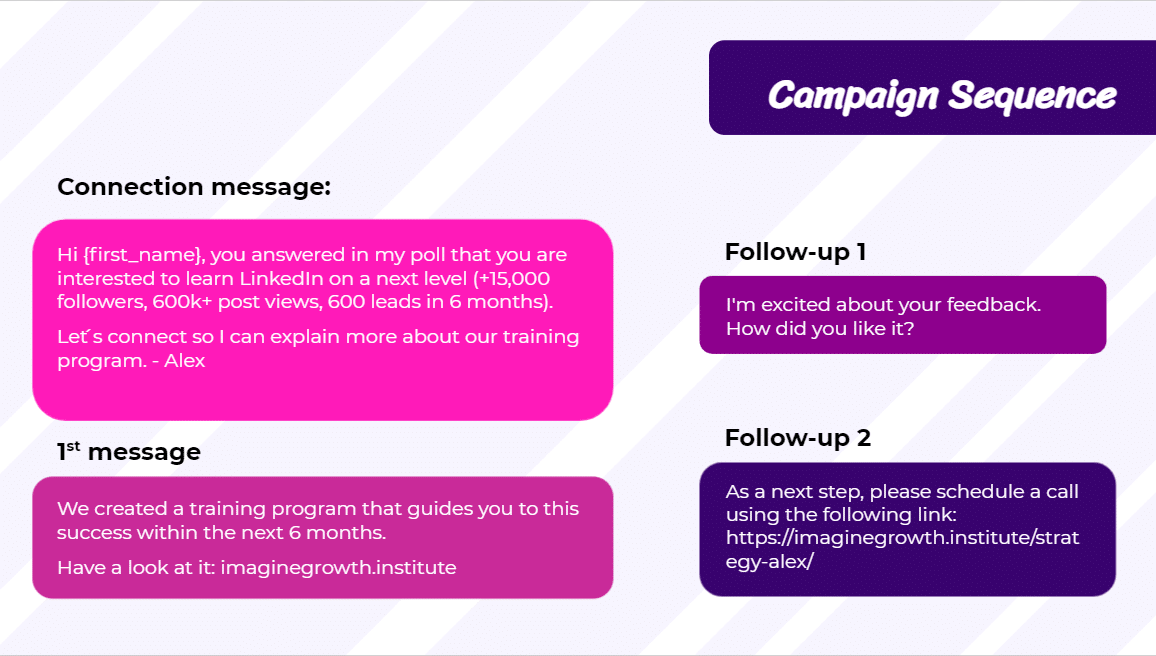
To turn this into a multi-channel campaign, you can just as easily incorporate email into the sequence to follow-up, remind people to connect or reply, or ask to schedule a call with email for a more personalized touch.
#2 LinkedIn event retargeting strategy
This strategy is a great way to find laser-specific leads from your target audience.
With this strategy, we’ll be scraping and reaching out to everyone who attended a specific LinkedIn event. Depending on the event, you can easily scrape well over 1,000+ leads from LinkedIn.
- Copy the URL of the LinkedIn event.
- Go to Expandi, go to the Search tab, and click New Search.
- Then, paste the URL in the Event Search section.
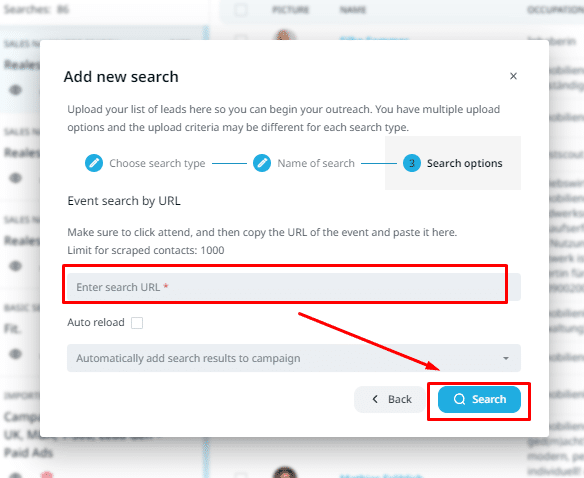
Then, you can add contacts to your campaign, segment, and filter accordingly.
Based on the specific event, you can assume the target audience’s interests, knowledge level, and how to approach them.
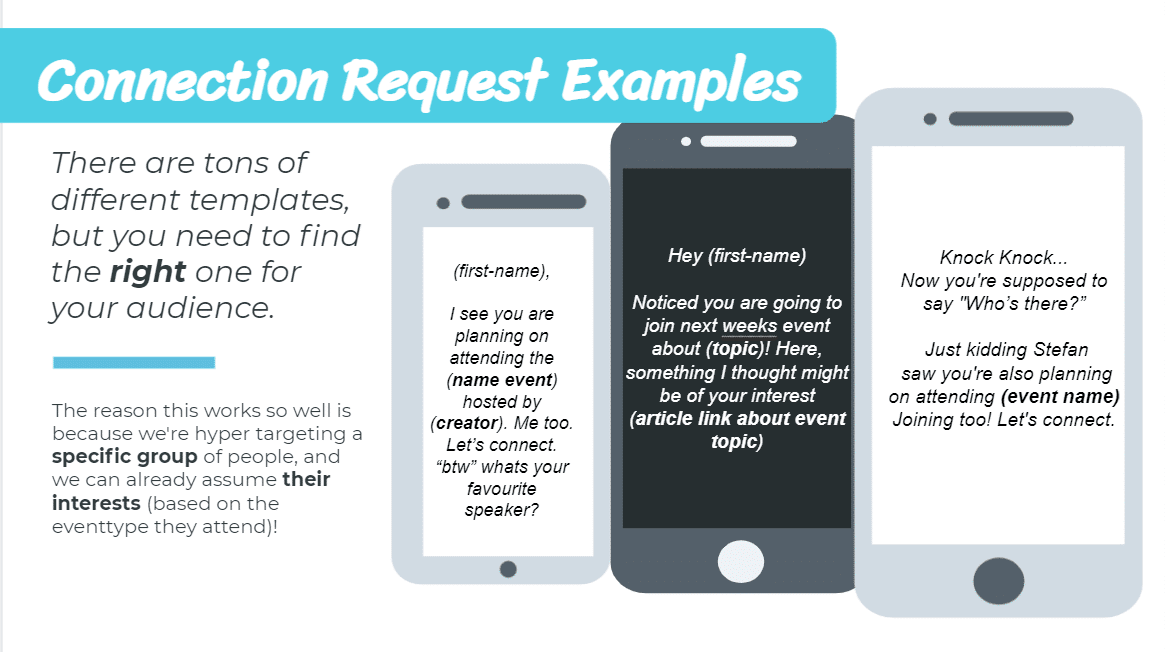
#3 Send over 1,000 connection requests per week with the new LinkedIn limits
Finally, you can bypass the new LinkedIn limit of 100 invites per week with this strategy.
Here’s how:
- Find your target market and customer personas using (Sales Navigator helps with this).
- Import and export from Expandi to find their emails.
- Import your contacts to LinkedIn using CSV Import/Google Contacts.
- Track who’s accepting your connection requests in Expandi & send them automated follow-ups, messages, or emails.
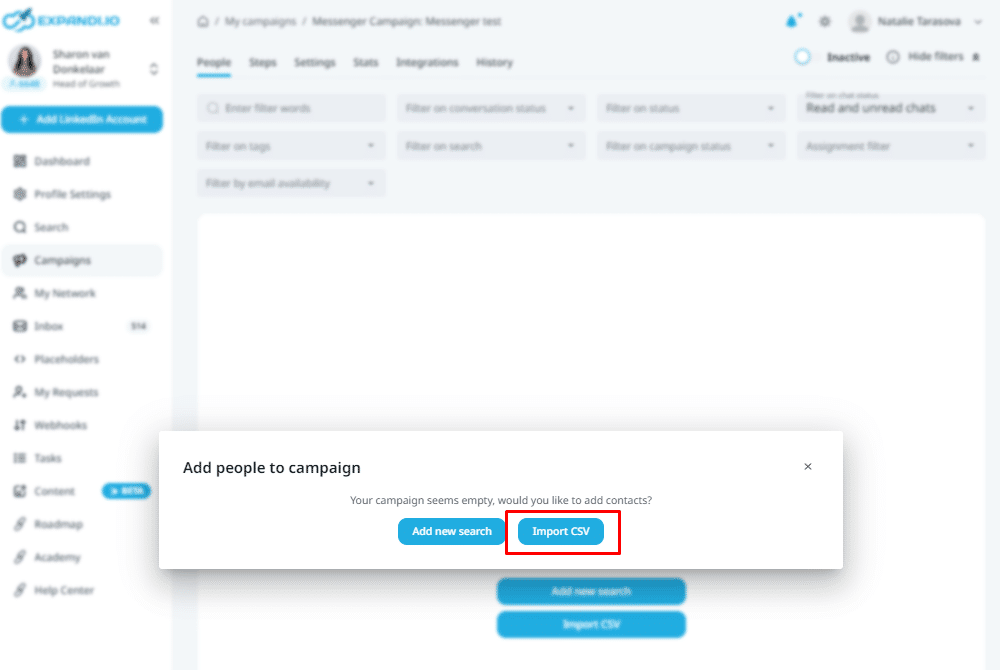
Note: With this campaign, you can’t personalize your connection requests. So, we strongly recommend sending a strong follow-up message or email to give your leads a reason to connect.
For a more detailed overview and step-by-step instruction of the above three multi-channel marketing strategies, check out our full list of LinkedIn social selling strategies.
Conclusion
Congratulations, you made it!
That was quite a lengthy read, but hopefully, this ultimate guide to multi-channel marketing was useful!
To sum up, let’s go over some of the most frequently asked questions:
- What is a multichannel marketing example?
Essentially, multi-channel marketing is the process of engaging customers and leads through a variety of different marketing channels. For B2B marketing, the main channels are LinkedIn and email. With the strategies we covered above, you can send a LinkedIn connection request and then an email follow-up if they haven’t replied yet. By engaging your leads on all channels, they’re more likely to remember you and reply.
- How do you create a successful multichannel marketing strategy?
There’s a lot that goes behind a successful multichannel marketing strategy. But the main components, as we covered above, are as follows:
- Knowing your target audience.
- Engaging them with the relevant content.
- Using personalization – through your cold messages or hyper-personalized, dynamic GIFs.
- Focusing on the right marketing channels for outreach, in this case, LinkedIn and email.
- What is an example of multichannel?
An example of multichannel marketing would be engaging your leads on multiple channels they use frequently. For example, you can send an automated email pitch, then a LinkedIn connection request asking if they saw your email. All this, done on autopilot, would save you a lot of time at scale instead of crafting each message individually on each channel.
- How to automate multichannel marketing?
There’s a lot of different ways to automate multichannel marketing. As we covered in this guide, you can use one tool (Expandi) to automate LinkedIn AND email. Instead of multi-tasking with different tools, you can use one tool for a strong, all-in-one multichannel marketing solution.
Ready to start sending multi-channel marketing outreach campaigns with the strategies we covered above?
Get started with a free, 7-day Expandi live demo and trial and launch your first automated campaign on autopilot with the resources mentioned in this guide!
You’ve made it all the way down here, take the final step

